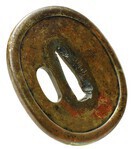-
Posts
2,458 -
Joined
-
Last visited
-
Days Won
21

Toryu2020 replied to Pete Klein's topic in Sword Shows, Events, Community News and Legislation Issues

Toryu2020 replied to Pete Klein's topic in Sword Shows, Events, Community News and Legislation Issues

Toryu2020 replied to daishobohi's topic in For Sale or Trade

Toryu2020 replied to daishobohi's topic in For Sale or Trade

Toryu2020 replied to Grey Doffin's topic in Sword Shows, Events, Community News and Legislation Issues

Toryu2020 replied to Curran's topic in Auctions and Online Sales or Sellers

